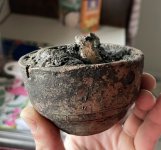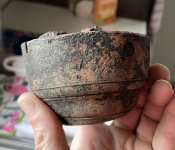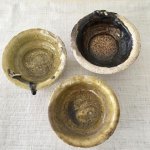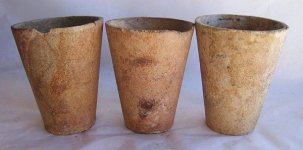Collers9640
Jr. Member
- Nov 21, 2011
- 29
- 66
- Detector(s) used
- Equinox 600 & 800
- Primary Interest:
- Relic Hunting
So I found this about 2 feet deep under a slave cabin brick foundation. It was tuck up underneath it the foundation on its side. It has a pig bone in it and some ash.
So this was either done on accident or on purpose.
If on purpose WHY?
Also does anyone know what this little copper pot was used for?
So this was either done on accident or on purpose.
If on purpose WHY?
Also does anyone know what this little copper pot was used for?








